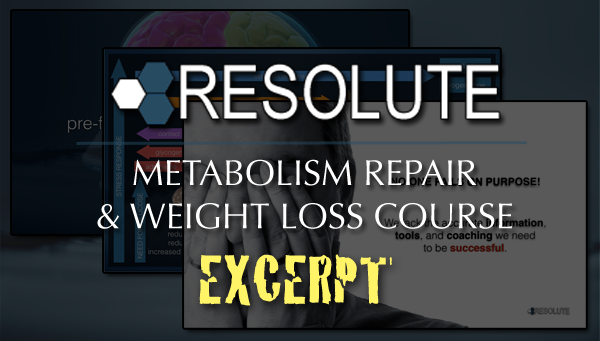The function of the parasympathetic nervous system is rest and repair or sometimes called rest and digest.
During slow wave sleep the body relaxes, breathing becomes more regular, blood pressure falls, and the brain is less responsive to outside stimuli. The pituitary gland releases growth hormone, which stimulates tissue growth and muscle repair.
In a study with the Stanford men’s basketball team. They slept ten hours a night for five weeks. The results were that the freethrowing percentage improved by 9 percent, the three point shooting improved by 9.2 percent and their 80 meter sprint was faster.
REM sleep is to the mind what slow sleep is to the body. REM sleep is when your brain dreams and reorganizes information. Your brain clears out irrelevant information, boosts your memory by connecting the events since your last sleep to your previous events, facilitates learning and neural growth.
One of the ways it repairs the brain is to remove toxic proteins from its neurons that are the by-products of neural activity when you are awake. Unfortunately, it can only do this when you are asleep. And when the toxic neurons are not removed they wreck havoc on your prefrontal cortex effecting cognition, creativity, problem solving and inhibition.
Sleep deprivation means you can’t recover physically, your immune system weakens, and your brain becomes foggy.
Sleep deprived individuals are at increased risk of viral infections, weight gain, diabetes, high blood pressure, heart disease, mental illness, and death.
One of the ways it does this is by raising the stress load on the body and the cortisol levels. A lack of sleep helps break down skin collagen making you look older by reducing the elasticity of the skin.
In men, not enough sleep reduces testosterone levels and sperm count.
But one of the major effects of sleep deprivation is it lowers metabolism. When you sleep less you increase the appetite-stimulating hormone ghrelin which in turn lowers your leptin which we are already aware causes low metabolic rate for an extended period of time.
People who sleep less than 6 hours per night are 30% more likely to become obese than those who sleep 7 – 9 hours a night.
Few people are at their best on less than 7 hours of sleep – and that is about half of all Americans.
And two things make matters even worse. First, sleep debt is cumulative. So one good nights sleep here and there is not enough to overcome several days of reduced sleep or sleep quality.
And second, people do not notice their own performance declines.
To improve your quality of sleep you can start by reducing or eliminating caffeine after noon.
But the biggest thing you can do is to avoid blue light at night. Short wave length blue light plays an important role in your mood, energy level, and sleep. In the morning sunlight has high levels of blue light to which you want to get exposed to as soon as possible because this exposure sets your circadian rhythm for the entire day.
Get outside as early as you can because even on a gray overcast day you will get about 100 times more blue light exposure outside than you will get indoors.
In the afternoon the suns rays lose their blue light which allows your body to produce melatonin and start making you sleepy. However, if you are surrounded by indoor blue light such as high efficiency lighting and television, phone, and computer screens you prolong your blue light exposure impacting your sleep patterns.
When you expose the brain to blue light in the evening, which it perceives to be morning light, you disrupt not just the quantity of sleep but the quality as well.
If you must use these devices after sunset there are blue wave blocking screen filters and sunglasses you can use.
Consistency is key to sleep quality. You should wake at the same time everyday – weekends included. This will improve your mood and sleep quality by improving regulation of your circadian rhythm. Roughly an hour before you wake hormone levels gradually increase along with temperature and blood pressure making you more alert.
If you are well rested you will probably naturally rise just before your alarm goes off.
When you don’t wake up the same time everyday your body does not know when to complete the sleep process. Binge sleeping on the weekend wrecks you circadian rhythm.
One of the biggest peaks in melatonin production occurs between 1 and 3 pm. If you need to nap, even just 20 minutes, this is the best time to do it.
Meditation is a technique that in its most basic form involves the observation of the breath while passively ignoring everyday thoughts. It offers direct access to the parasympathetic nervous system in a very different way than sleep.
The practice of meditation produces different electrical patterns in the brain then those associated with sleep, and activates both the prefrontal cortex and the amygdala among other brain structures, while lowering respiration rate, decreasing the tidal volume of carbon dioxide, and increasing blood oxygen saturation levels.
The most basic form of meditation is to find a comfortable place to sit upright. A kitchen chair is fine. You want to be able to keep your knees below your hips and feet flat on the floor while maintaining good posture as if a string were tied to the top of your head and lightly pulled you up.
Your weight should be balanced on the spine, you do not want muscle fatigue or low back discomfort during the meditation.
Rest your hands lightly in your lap and, set a timer for 5 minutes and close your eyes. Observe your breath without any effort to alter it. Do not be discouraged if this is difficult at first. Your goal is to watch and count your breath. Begin at one, and start over when you reach nine.
You will have outside thoughts intrude, simply acknowledge them and resume counting. It will become obvious that you are distracted when you find yourself counting numbers higher than nine.
Another great way to get started with the benefits of meditation is to simply lay down and scan the body from head to toe. As you scan from muscle to muscle you are simply looking for places with tension.
Do not try to change the tension, just watch it for a time. You will find that by watching it, it will naturally dissipate. Then simply move on to the next source of tension.
This is a great exercise to try just before going to sleep.
This is an excerpt of the RESOLUTE online weight loss and metabolic repair course inspired by the work of Dr. Ray Peat, Dr. Broda Barnes, Dr. Brene Brown, Dr. James Prochaska, Dr. Martha Beck, Dr. Judith Beck, and Dr. Hans Selye.
Taiso Fitness and Nutrition
If you are looking for a shared personal training experience try Taiso Fitness and Nutrition. We are Tacoma’s fitness and nutrition gym for people who want to get out of pain or improve performance, who need immediate, measurable results, and want to make educated decisions to take control of their health.
Shared personal training provides the coaching of a personal trainer with the social support of a bootcamp style class.
Set up a complimentary consultation, or start a 21 Day Risk Free Trial. Stay up to date on the latest information through our website at www.taisofitness.com
Looking for an online course to help lose weight by repairing your metabolism and lowering your stress? Try RESOLUTE The Step-By-Step Program for People Who Want To Repair Their Metabolism.

